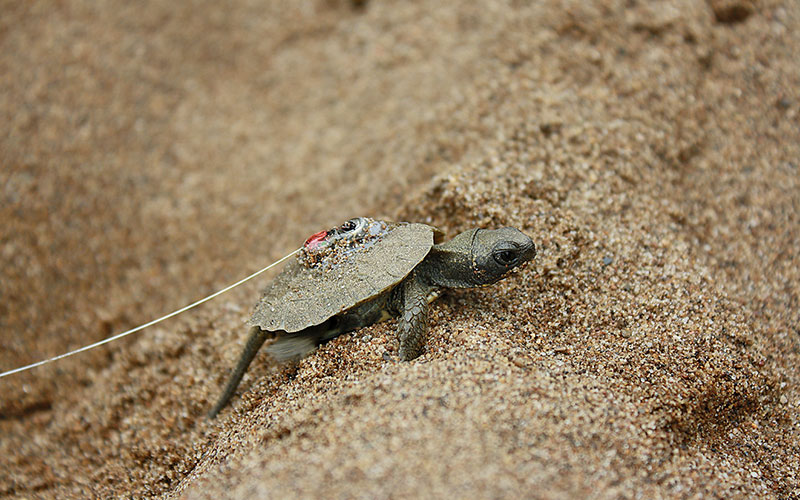Wood turtles (Glyptemys insculpta) are the most terrestrial turtle found in Minnesota, placing them at a greater risk than their aquatic counterparts. Predators, habitat loss, road mortality and more have made them a threatened species in Minnesota. That’s why we’re testing conservation techniques to see how we can help this unique species!

Since 1998, the Nongame Wildlife Program has been monitoring wood turtles along several southeastern Minnesota streams to determine population size and age, range, and habitat use. We’ve partnered with the Minnesota Biological Survey and the Minnesota Zoo to do extensive telemetry work. We’re monitoring adult and juvenile turtles and determine habitat preferences and movements. Our goal is to develop habitat management plans with landowners along these rivers, to help them preserve Minnesota's wood turtles.
The Nongame Wildlife Program and Minnesota Biological Survey have been surveying rivers and streams across eastern Minnesota to better understand where wood turtles are found and how abundant they are. Using this information, we can focus our efforts on the most important or critical locations for wood turtles in Minnesota.
In addition, the Nongame Wildlife Program has been studying ways we can help wood turtles in northeast Minnesota. We received two competitive State Wildlife Grants and are working with Wisconsin, Michigan, and Iowa to identify threats to wood turtles in the Upper Midwest and the effectiveness of different conservation techniques. In partnership with the University of Minnesota, we’ve created flood-safe nesting habitats, protected nests from predators, installed road barriers, and enhanced foraging habitat. Field surveys, game cameras, and telemetry were used to assess the effectiveness of these conservation actions. We created a monitoring protocol and collected baseline population data that will let us see the long-term effect of these conservation actions on the population.
A Minnesota Wood Turtle Conservation Plan was developed to identify priorities for wood turtle conservation over the next 10 years. The Plan identifies strategies to maintain and enhance habitat, decrease adult turtle mortality, increase survival of young turtles, fill knowledge gaps, and increase conservation partnerships. The Plan outlines specific actions the DNR and our partners can take to help wood turtles in Minnesota.

